The Secret Sauce of Game Development: From Concept to Launch 🎮
 Daniel Parente
Daniel ParenteTable of contents
- 🔑 Key Takeaways:
- Conceptualization: Where Magic Begins
- Importance of Genre and Audience
- Vision and Essence
- Idea Generation and Feasibility
- Pre-Production: Turning Dreams into Plans
- Prototyping
- Key Objectives
- Planning and Documentation
- Production: Where Magic Happens
- Workflow and Pipelines
- Art and Design Collaboration
- Level and Environment Design
- Audio Integration
- Testing: Polishing Diamond
- Quality Assurance
- Types of Testing
- Iteration and Feedback
- Accessibility Considerations
- Inclusive Design Principles
- Types of Accessibility Changes
- Marketing and Launch
- Pre-Launch Strategies
- Launch Day
- Post-Launch Engagement
- Post-Launch: Keeping Dream Alive
- Community Engagement
- Hotfixes and Patches
- Regular Updates and Downloadable Content
- Further References
- Conclusion
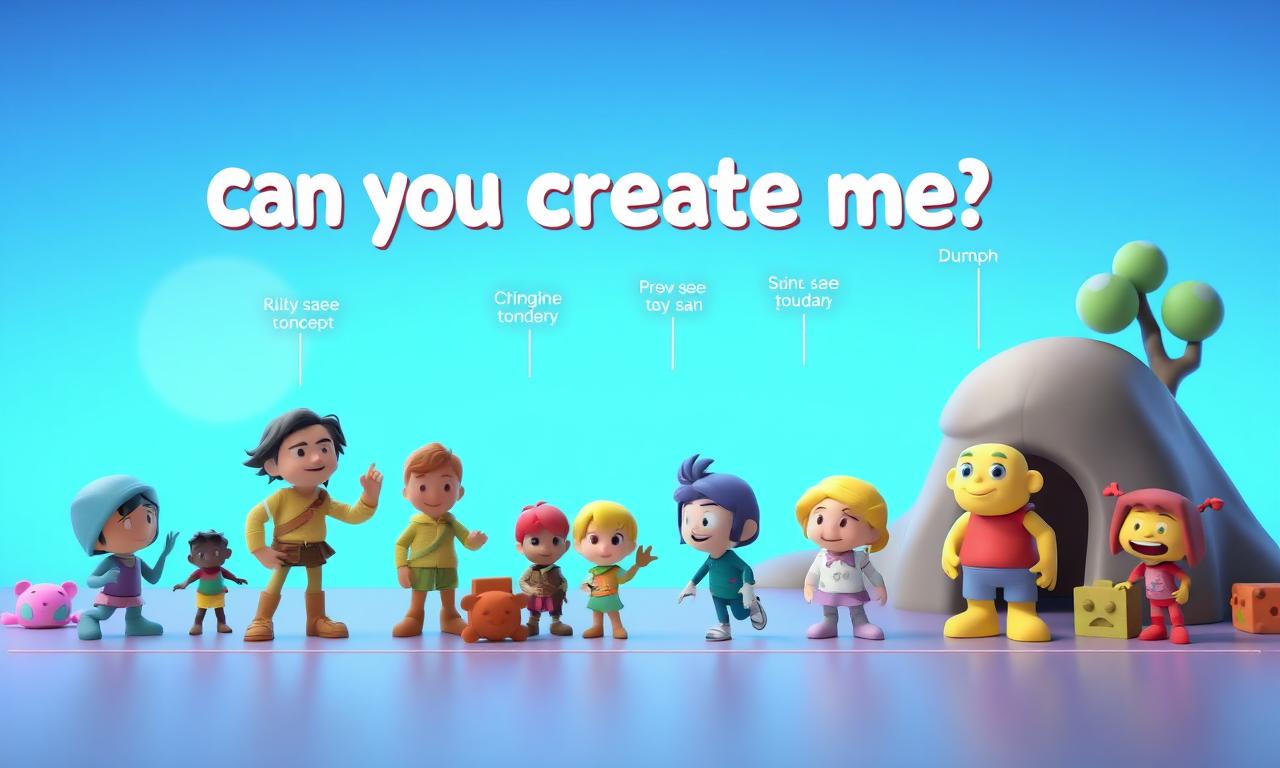
Game development ain’t just about coding and pretty graphics. It’s a wild ride of creativity, problem-solving and teamwork that brings virtual worlds to life. But what really makes a game tick? Let’s dive into secret sauce behind your favorite digital adventures!
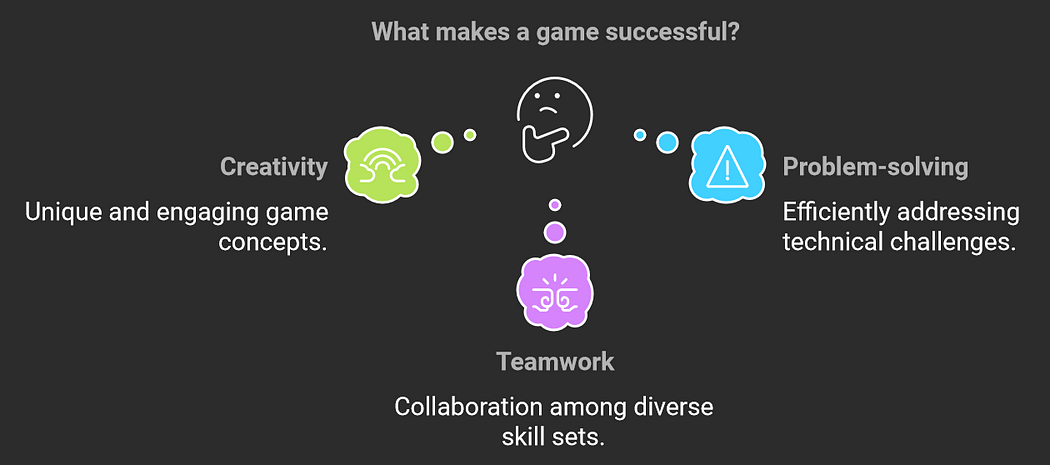
🔑 Key Takeaways:
Conceptualization lays foundation for successful game development
Effective pre-production transforms ideas into actionable plans
Production phase requires seamless collaboration among diverse teams
Rigorous testing ensures quality and enhances player experience
Post-launch support crucial for long-term success and player engagement
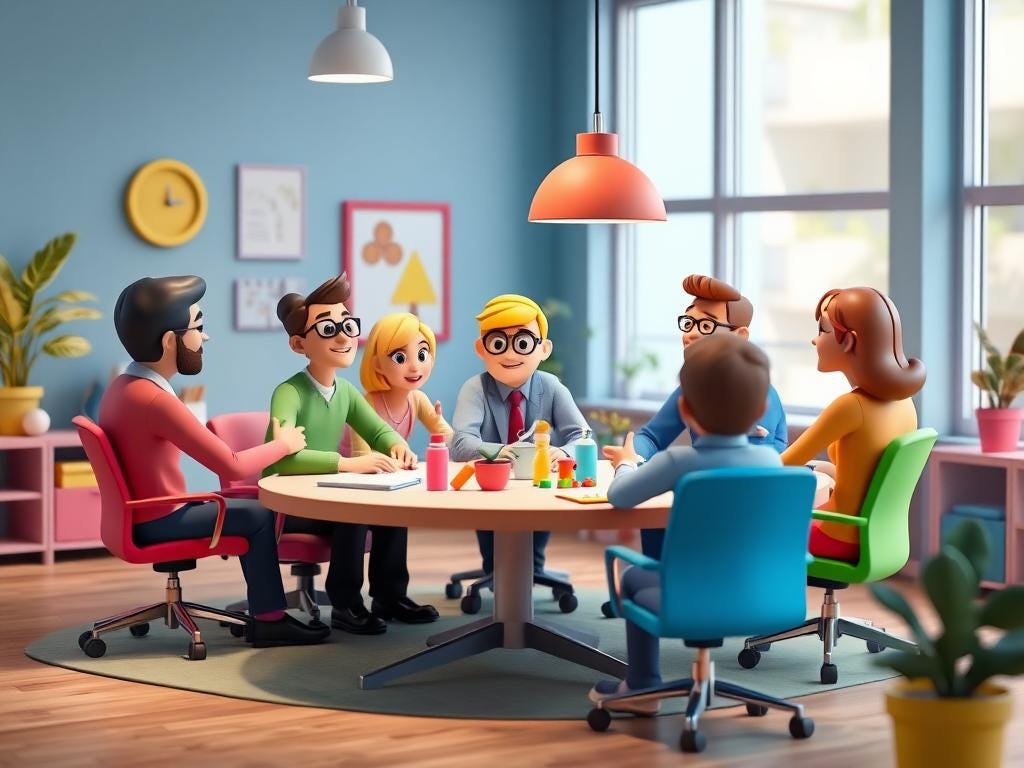
Conceptualization: Where Magic Begins
Picture this: a room full of creatives, whiteboards covered in scribbles and sticky notes everywhere. This my friends is where game ideas are born. Conceptualization stage sets tone for entire development journey.
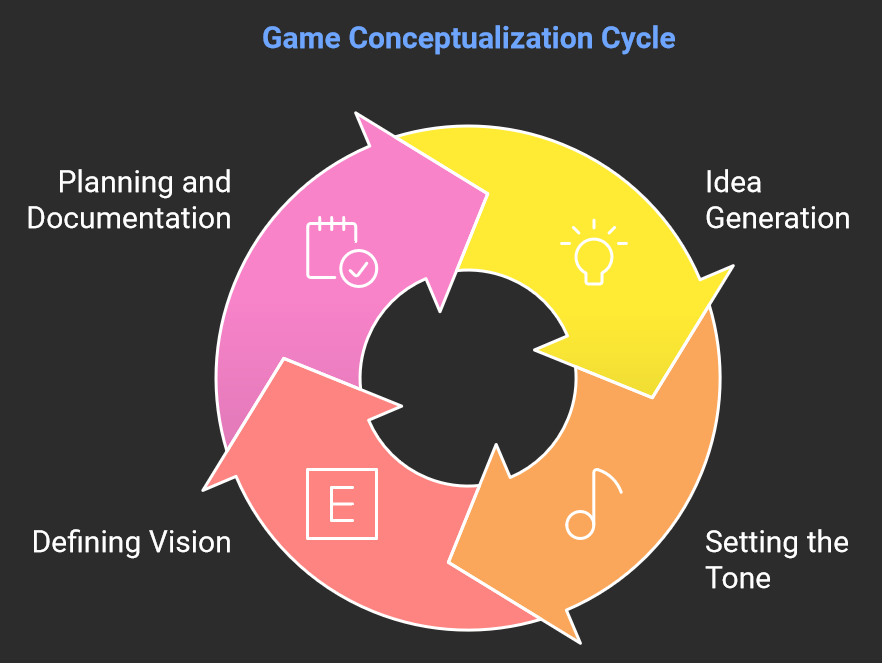
Importance of Genre and Audience
Choosing game’s genre ain’t just picking from a menu. It’s about understanding what kinda experience you wanna create and who you’re creating it for. You wouldn’t serve a steak to a vegan, would ya? Same goes for games — gotta know your audience!
A survey by Entertainment Software Association found 70% of gamers cite stories and characters as major factors in their enjoyment. That’s huge! It means nailing your concept and narrative is crucial for hooking players.

Vision and Essence
Creating game’s vision is like painting picture of future. It’s not just about mechanics or visuals — it’s about capturing essence of what makes your game unique. This vision guides every decision throughout development ensuring everything stays on track.
Idea Generation and Feasibility
Brainstorming sessions during conceptualization are like throwing spaghetti at wall — not everything will stick but that’s okay! Key is finding balance between innovative ideas and what’s actually doable. Gotta dream big but keep feet on ground ya know?
“Conceptualization isn’t just about dreaming up cool ideas — it’s about setting foundation for entire game development process.” — Anonymous Game Developer
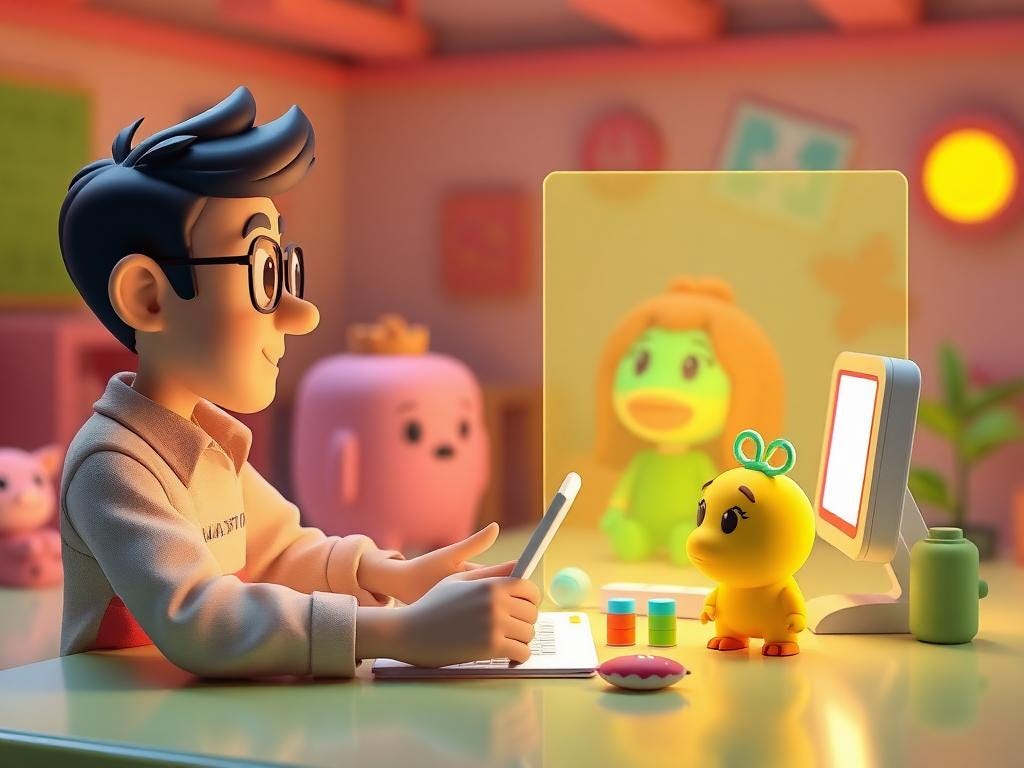
Pre-Production: Turning Dreams into Plans
Once you’ve got solid concept it’s time to get nitty-gritty with pre-production. This stage transforms those grand ideas into actionable plans that’ll guide rest of development.
Prototyping
Prototyping is where rubber meets road. It’s chance to test out core mechanics and get early feedback. Unity and Unreal Engine are popular tools for quickly bringing ideas to life. Think of it like sketching before painting masterpiece — helps you figure out what works and what doesn’t before committing too much time or resources.
Key Objectives
Establishing Identity
During pre-production you’ll flesh out game’s identity. This means nailing down specifics like art style, gameplay mechanics and overall vibe. It’s like creating DNA of your game — everything else will stem from this foundation.
Setting Objectives
Setting clear goals and timelines is crucial. It’s easy to get carried away with cool ideas but without structure you might end up with half-finished game that tries to do everything but succeeds at nothing.
Planning and Documentation
Game Design Document (GDD) is holy grail of pre-production. It’s blueprint that outlines every aspect of game from story beats to UI design. Creating comprehensive GDD ensures everyone on team is on same page and working towards shared vision.

Production: Where Magic Happens
Production phase is where all pieces start coming together. It’s like orchestrating symphony — every section needs to play their part perfectly for beautiful result.
Workflow and Pipelines
Establishing efficient workflows is key to smooth production. Whether you’re using agile, waterfall or some hybrid approach, clear communication and regular check-ins are essential for keeping project on track.
Art and Design Collaboration
Collaboration between artists and programmers is delicate dance. Artists bring world to life with stunning visuals while programmers make sure everything runs smoothly under hood. It’s all about finding balance between beauty and functionality.
Level and Environment Design
Crafting engaging levels and immersive environments is where games really come alive. Environmental artists add those little details that make world feel real and lived-in. It’s difference between bland backdrop and world players can lose themselves in for hours.
Audio Integration
Don’t underestimate power of sound! From epic soundtrack to subtle ambient noises, audio plays huge role in creating immersive experience. Integrating audio early in development can significantly influence game’s atmosphere and emotional impact.
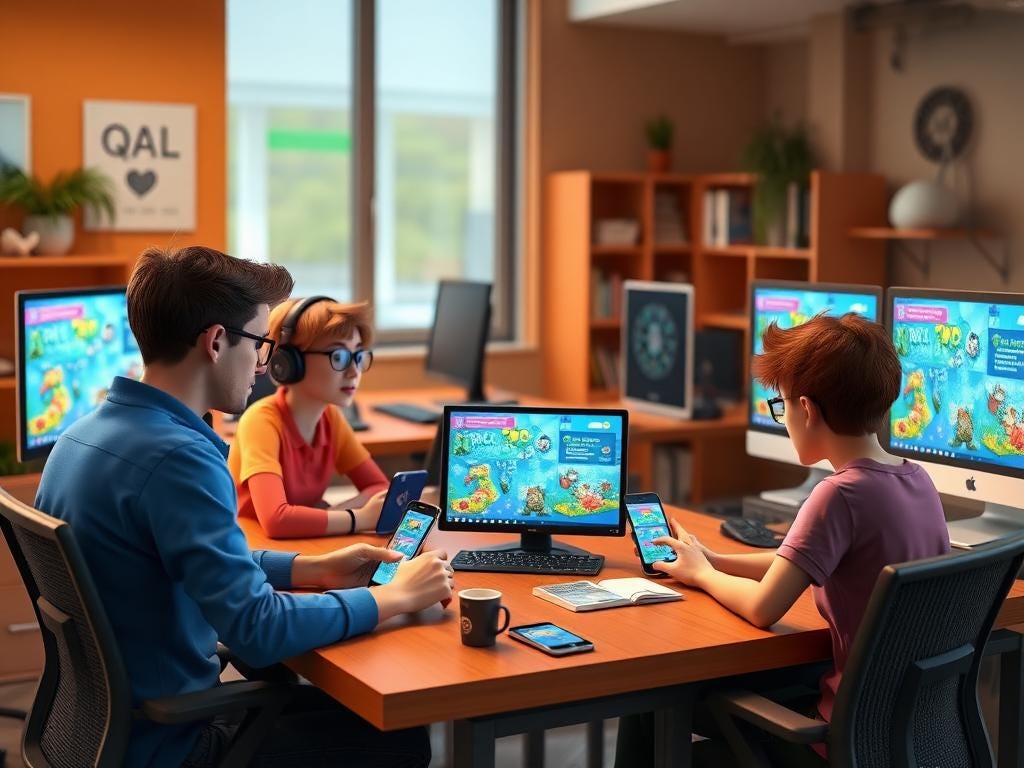
Testing: Polishing Diamond
Testing phase is where game goes from good to great. It’s all about ironing out kinks, squashing bugs and making sure everything is smooth as butter.
Quality Assurance
QA testers are unsung heroes of game development. They play game over and over looking for any issues that might ruin player’s experience. It’s tedious work but absolutely essential for delivering polished product.
Types of Testing
Alpha Testing
Alpha testing is first real test of game. It’s usually done internally and focuses on core functionality. Think of it as dress rehearsal before big show.
Beta Testing
Beta testing opens game up to wider audience. This is chance to get valuable feedback from real players and catch any issues that might’ve slipped through cracks.
Stress Testing
For online games stress testing is crucial. You gotta make sure servers can handle flood of players without crashing. Nobody wants game to go down on launch day!
Iteration and Feedback
Testing isn’t one-and-done deal. It’s iterative process of testing, gathering feedback and making improvements. Continuous refinement is key to creating game that players will love.
Accessibility Considerations
Making games accessible isn’t just nice-to-have — it’s essential for reaching widest possible audience. From color-blind modes to customizable controls, there’s lot that can be done to make games more inclusive.
Inclusive Design Principles
Designing for accessibility from get-go is always better than trying to retrofit later. It’s about considering diverse needs of players and creating experience that everyone can enjoy.
Types of Accessibility Changes
Vision and Hearing Considerations
High-contrast modes, adjustable text sizes and closed captions are just few ways to make games more accessible for players with visual or auditory impairments.
Customizable Controls
Remappable buttons and multiple control schemes can make huge difference for players with limited mobility or dexterity.

Marketing and Launch
Even best game in world won’t succeed if nobody knows about it. Marketing and launch strategy are crucial for getting your game in front of right audience.
Pre-Launch Strategies
Building buzz before launch is key. Demos, beta tests and influencer partnerships can all help generate excitement and anticipation for your game.
Launch Day
Launch day is big moment you’ve been working towards. Make sure everything is ready to go — from game files to marketing materials. And don’t forget to celebrate with your team!
Post-Launch Engagement
Launch is just beginning. Keeping players engaged with regular updates, community events and new content is crucial for long-term success of your game.
Post-Launch: Keeping Dream Alive
Game development doesn’t end at launch. Post-launch phase is all about supporting your game and community for long haul.
Community Engagement
Building strong relationship with your player community is essential. Listen to their feedback, address their concerns and make them feel heard. Happy players are best ambassadors for your game.
Hotfixes and Patches
No matter how much you test there’ll always be some issues that slip through. Being quick to address problems with hotfixes and patches shows players you care about their experience.
Regular Updates and Downloadable Content
Keeping game fresh with regular updates and DLC can extend its lifespan significantly. New content gives players reason to keep coming back and can even attract new players long after initial launch.
Further References
The HARDEST part of game development | Devlog
The Most Important Gamedev Questions In 2024!
Infography
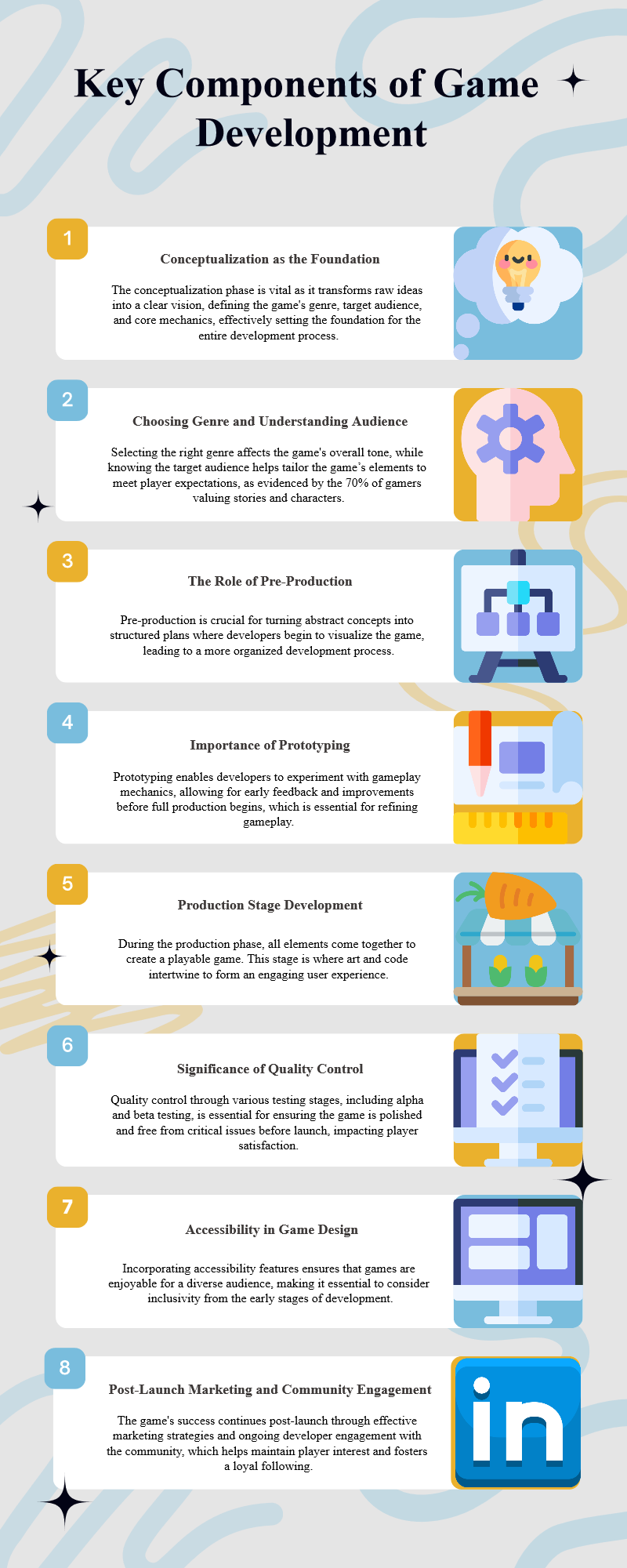
Conclusion
Game development is complex multifaceted process that requires creativity, technical skill and lot of hard work. From initial concept to post-launch support, every stage plays crucial role in creating successful game. By understanding these key elements and focusing on creating engaging, accessible experiences, developers can craft games that captivate players and stand test of time.
Remember, great game isn’t just about flashy graphics or complex mechanics — it’s about creating experience that resonates with players and keeps them coming back for more. So dream big, plan carefully and never stop iterating!
So stay tuned for updates on these futures. And if you found this glimpse beyond the bleeding edge compelling, hit the subscribe and share buttons to help spread the word!
If you want to read more interesting content don’t forget to check on my blog.
Subscribe to my newsletter
Read articles from Daniel Parente directly inside your inbox. Subscribe to the newsletter, and don't miss out.
Written by
